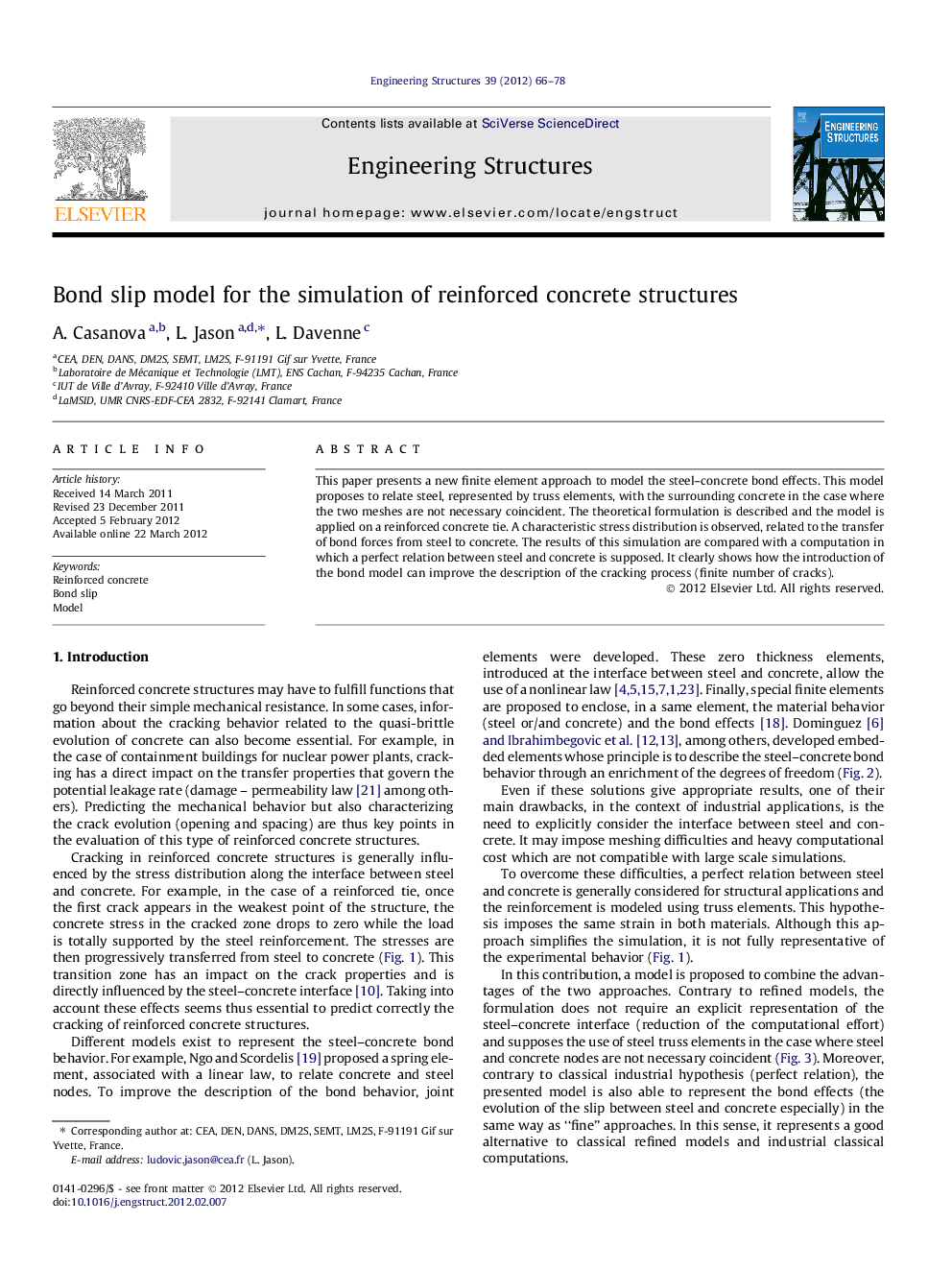| Article ID | Journal | Published Year | Pages | File Type |
|---|---|---|---|---|
| 267529 | Engineering Structures | 2012 | 13 Pages |
This paper presents a new finite element approach to model the steel–concrete bond effects. This model proposes to relate steel, represented by truss elements, with the surrounding concrete in the case where the two meshes are not necessary coincident. The theoretical formulation is described and the model is applied on a reinforced concrete tie. A characteristic stress distribution is observed, related to the transfer of bond forces from steel to concrete. The results of this simulation are compared with a computation in which a perfect relation between steel and concrete is supposed. It clearly shows how the introduction of the bond model can improve the description of the cracking process (finite number of cracks).
► A new model to take into account the bond effects in reinforced concrete structures at a structural level is proposed. ► A validation of the model on a 1D reinforced concrete tie is performed. ► The influence of the bond effects on the steel stress distribution, crack spacing and crack opening is investigated. ► The introduction of the bond model clearly influences the description of the crack process.
